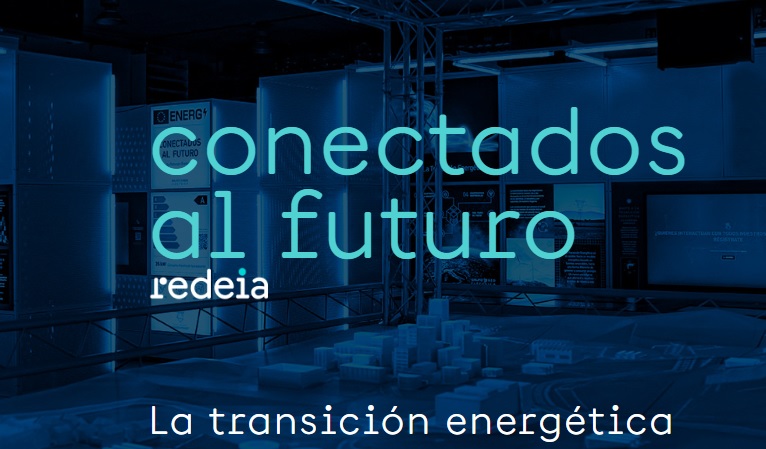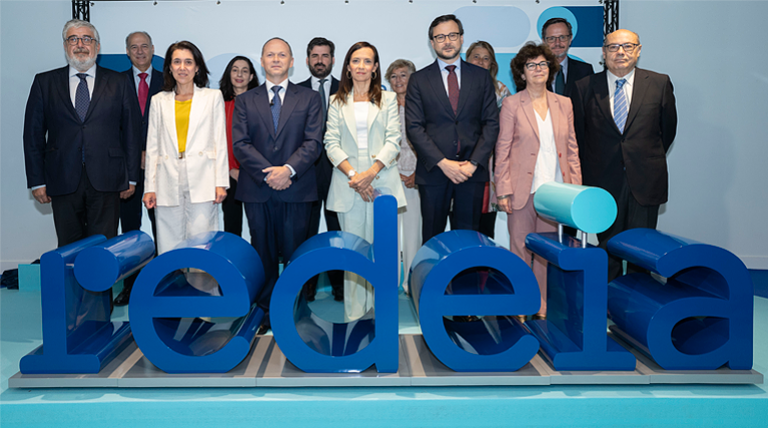We are a global operator of essential infrastructure
The Caramuel project includes internationally renowned companies and academia to develop a payload that positions Spain at the forefront of secure space communications.
This innovative mission will allow Spain to configure its main contribution in the space sector to the European Quantum Communication Infrastructure (EuroQCI) initiative of the European Commission.
A group of internationally renowned Spanish companies and academia led by Redeia’s satellite operator HISPASAT has announced their participation in the feasibility study of Caramuel mission, the world’s first geostationary satellite mission aimed at quantum key distribution, one of the main technologies that will define secure communications in the future. The feasibility study of Caramuel mission is funded by the European Space Agency and the Spanish space industry is highly involved in its execution.
In addition to HISPASAT, this feasibility study includes companies such as Alter, Banco Santander, BBVA, Cellnex, Das Photonics, GMV, Indra, Grupo Oesía, Quside, Sener, Telefónica and Thales Alenia Space España; and institutions and academia such as the Centro Criptológico Nacional (CCN), the Consejo Superior de Investigaciones Científicas (CSIC), the Instituto de Astrofísica de Canarias (IAC), the Instituto de Ciencias Fotónicas (ICFO), the Instituto Nacional de Técnica Aeroespacial (INTA), the Universidad Politécnica de Madrid (UPM) and the Universidade de Vigo.
A paradigm shift in secure communications
The advent of quantum computers is providing much greater computational power than traditional computers for specific problems, including prime factor decomposition which is the basis of current non-symmetric cryptography. This will lead to a paradigm shift in secure communications as it will be possible for hackers with quantum computers to decrypt current encryptions in a matter of seconds. As such, it is essential to develop a system that allows information to be sent with the necessary safeguards in governmental communications (both civil and military), critical infrastructure management and economically, environmentally and technologically relevant services, as well as in large corporations.
Quantum key distribution through an optical communications system makes it possible to confirm with certainty if the keys have been intercepted, as the integrity of the communications is verified continuously thanks to the quantum properties of photons. As of today, technology does not allow the use of fiber optic-based connections for quantum communications for distances of just over 100 kilometers.
However, the use of satellites for quantum key distribution is capable of covering large distances, as there is lower signal attenuation in free space. Specifically, geostationary coverage at an altitude of 36,786 km, unlike other orbits, makes it possible to establish communications between entire continents with a single satellite, continuously and without the need for signal tracking.
The Caramuel system includes an on-board quantum payload hosted in a geostationary satellite, as well as its associated ground segment. While the payload features a high-precision telescope, a source of photons capable of sending photon-to-photon deliveries to earth in order to preserve their quantum properties and all the associated electronics, the ground segment features a control center and the user’s optical stations. The control center’s main function is to supervise and control the Caramuel system as a whole and, more specifically, the on-board system through telemetry and control. The optical stations include telescopes with apertures between 80 centimeters and 1.80 meters and cryogenic receivers to be able to detect the photons individually.
Caramuel’s most critical users will have their own telescope in order not to rely on intermediate ground networks and thus have the highest level of security. On the other hand, commercial users who do not need to have their own telescope can join the ground-based quantum network at a lower cost up to an intermediate node with a telescope (owned by a service provider), which will connect them via satellite to other nodes of the same provider or others in order to achieve a global network.
That way, Caramuel is being integrated with ground-based infrastructure to provide a cryptographic quantum key distribution service that is seamless and transparent for end users. As proof of concept for this mission, a quantum key distribution satellite connection will be established between two nodes which, in turn, are connected by a ground-based infrastructure with signal transmitting and receiving centers; in other words, with users who want to share the quantum key to be able to encrypt their messages securely.
Spanish contribution to secure European space
In June 2019, the European Commission announced its position in favor of the European Quantum Communications Infrastructure (EuroQCI), which will deploy the first quantum communications nodes in different EU countries in upcoming years. These nodes, which will cover metropolitan areas, will be connected to each other by satellite to ensure their resilience. The secure satellite communications system promoted by the Commission, whose preliminary study featured HISPASAT’s participation, will include these EuroQCI satellite connections among its missions. The Caramuel project will allow Spain to make its main contribution to these European initiatives in the space sector.
Caramuel’s studies formally started in May after several previous preliminary studies and are scheduled to be completed in October this year. Work is already underway on the preliminary definition of the quantum key distribution system and, specifically, on its end-to-end architecture, whose main aim is to integrate the system with the quantum network on the ground and analyze real cases with the banking sector and terrestrial operators.














